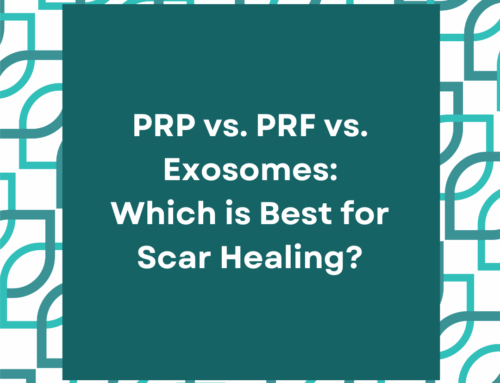Scars can be a source of discomfort and self-consciousness for many individuals. They serve as reminders of past injuries, surgeries, or skin conditions like acne. Over the years, various treatments have been developed to address scarring, one of the most effective being the use of hyaluronic acid (HA) fillers. This article delves into the world of hyaluronic acid fillers, exploring how they work, their benefits, the procedure, and what to expect in terms of results.
What is Hyaluronic Acid?
Hyaluronic acid is a naturally occurring substance in the body, predominantly found in the skin, connective tissues, and eyes. It plays a crucial role in retaining moisture, providing hydration, and maintaining the skin’s elasticity and volume. As we age, the levels of hyaluronic acid in our skin decrease, leading to dryness, loss of volume, and the formation of wrinkles and fine lines.
How Do Hyaluronic Acid Fillers Work?
Hyaluronic acid fillers are injectable treatments designed to address various skin concerns, including scars. These fillers work by adding volume to the skin and filling in depressions caused by scars. When injected into the scar tissue, hyaluronic acid attracts and binds water, which plumps up the area, smoothing out the skin’s surface and reducing the appearance of the scar.
Benefits of Hyaluronic Acid Fillers for Scars
- Immediate Results: One of the most appealing aspects of hyaluronic acid fillers is the immediate improvement they offer. Patients often see a noticeable difference right after the procedure.
- Minimally Invasive: Unlike surgical scar revision, hyaluronic acid fillers are minimally invasive, involving only injections. This results in less downtime and a quicker recovery.
- Natural-Looking Results: Since hyaluronic acid is a substance naturally found in the body, the results tend to look more natural compared to synthetic fillers.
- Customizable Treatment: The treatment can be tailored to the specific needs of the patient, allowing for precise correction of the scar’s depth and size.
- Biocompatibility: Hyaluronic acid fillers are generally well-tolerated by most people, with a low risk of allergic reactions or adverse effects.
The Procedure
Consultation
The first step in treating scars with hyaluronic acid fillers is a consultation with a qualified dermatologist or plastic surgeon. During this consultation, the doctor will evaluate the scar, discuss the patient’s goals and expectations, and determine if hyaluronic acid fillers are the appropriate treatment.
Preparation
Before the procedure, the treatment area will be cleaned and sterilized. In some cases, a topical anesthetic or numbing cream may be applied to minimize discomfort during the injections.
Injection
The hyaluronic acid filler is then injected directly into the scar tissue using a fine needle or cannula. The amount and depth of the injection will depend on the type and severity of the scar. The doctor may massage the area gently to ensure even distribution of the filler.
Post-Procedure Care
After the injections, patients are advised to avoid strenuous activities, excessive sun exposure, and touching or massaging the treated area for a few days. Mild swelling, redness, or bruising at the injection site is common but typically resolves within a few days.
Types of Scars Treated with Hyaluronic Acid Fillers
Hyaluronic acid fillers can be used to treat various types of scars, including:
- Acne Scars: Depressed acne scars, such as icepick and boxcar scars, can benefit from hyaluronic acid fillers as they add volume and smooth out the skin’s surface.
- Surgical Scars: Scars resulting from surgical procedures can be softened and made less noticeable with hyaluronic acid fillers.
- Traumatic Scars: Injuries that leave behind indentations or uneven skin texture can be effectively treated with hyaluronic acid fillers.
- Atrophic Scars: These are sunken or pitted scars often caused by conditions like chickenpox. Hyaluronic acid fillers help elevate these depressions, creating a smoother skin appearance.
What to Expect
Immediate Effects
Patients will notice an immediate improvement in the appearance of their scars. The treated area will look fuller and smoother right after the procedure.
Short-Term Results
In the days following the treatment, any initial swelling or redness will subside, revealing the final results. The skin will appear more even, and the scar will be less noticeable.
Long-Term Results
The effects of hyaluronic acid fillers are temporary, typically lasting between 6 to 18 months, depending on the product used and the individual’s metabolism. Maintenance treatments are necessary to sustain the results over time.
Side Effects and Risks
While hyaluronic acid fillers are generally safe, there are some potential side effects and risks to be aware of:
- Mild Discomfort: Patients may experience slight discomfort during the injection process, which can be minimized with topical anesthetics.
- Swelling and Bruising: Temporary swelling and bruising at the injection site are common but usually resolve within a few days.
- Allergic Reactions: Although rare, some individuals may have an allergic reaction to the filler. It’s essential to discuss any known allergies with the doctor before the procedure.
- Infection: Proper sterilization and post-procedure care are crucial to prevent infection at the injection site.
Choosing the Right Practitioner
Selecting a qualified and experienced practitioner is critical to achieving optimal results with hyaluronic acid fillers. Here are some tips for choosing the right professional:
- Credentials and Experience: Ensure the practitioner is a board-certified dermatologist or plastic surgeon with extensive experience in administering hyaluronic acid fillers.
- Patient Reviews and Testimonials: Look for reviews and testimonials from previous patients to gauge the practitioner’s reputation and the quality of their work.
- Before and After Photos: Reviewing before and after photos of previous patients can give you an idea of the practitioner’s skill and the results you can expect.
- Consultation: A thorough consultation is essential to discuss your goals, ask questions, and assess the practitioner’s knowledge and approach.
Combining Treatments
In some cases, combining hyaluronic acid fillers with other treatments can enhance the overall results. Some complementary treatments include:
- Microneedling: This procedure involves creating tiny punctures in the skin to stimulate collagen production and enhance the effectiveness of hyaluronic acid fillers.
- Laser Therapy: Laser treatments can help improve skin texture and tone, complementing the volumizing effects of hyaluronic acid fillers.
- Chemical Peels: Chemical peels exfoliate the skin, promoting cell turnover and improving the overall appearance of scars.
Cost Considerations
The cost of hyaluronic acid filler treatments for scars varies depending on factors such as the type of filler used, the practitioner’s expertise, and the geographical location. On average, patients can expect to pay between $500 and $1,500 per treatment session. It’s essential to discuss the cost during the consultation and explore any available financing options.
Conclusion
Hyaluronic acid fillers offer a promising solution for individuals seeking to reduce the appearance of scars and achieve smoother, more even skin. With immediate results, minimal downtime, and natural-looking outcomes, these fillers have become a popular choice for scar treatment. By choosing a qualified practitioner from Scar Healing Institute and understanding what to expect from the procedure, patients can achieve their desired results and boost their confidence. If you’re considering hyaluronic acid fillers for scar treatment, consult with a trusted professional to explore your options and embark on your journey to smoother, scar-free skin.




